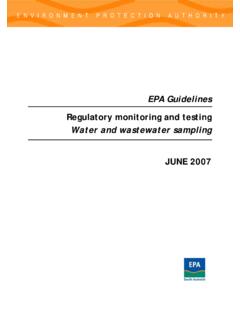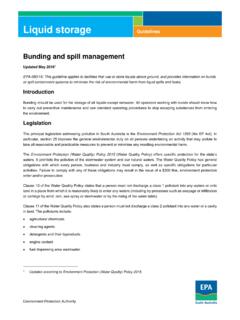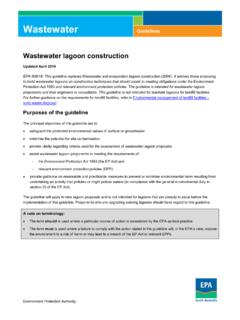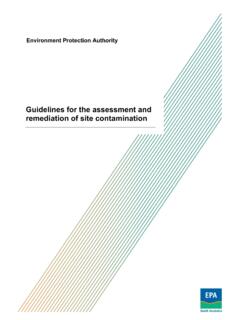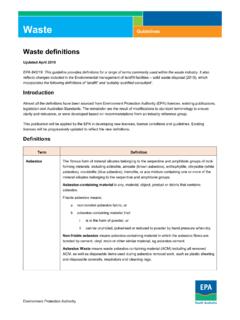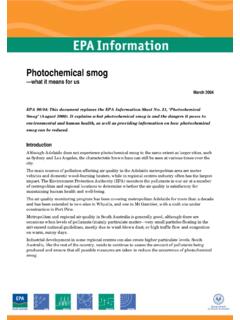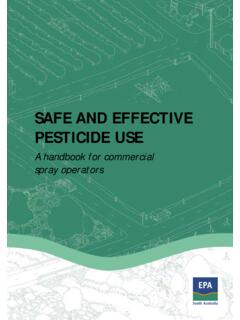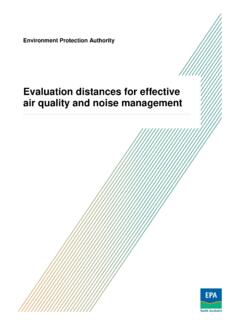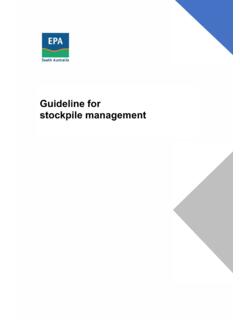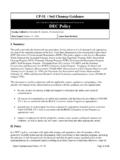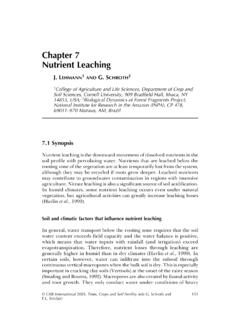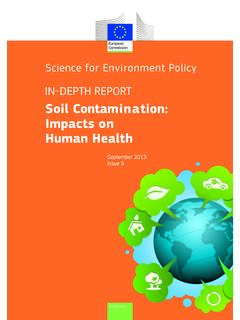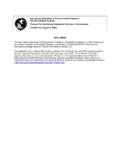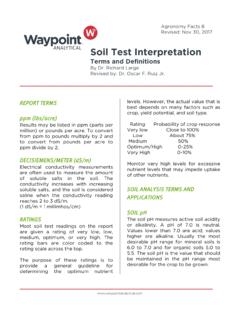Transcription of Composite soil sampling - EPA
1 Composite soil sampling in site contamination assessment and management Issued March 2005 This guideline is intended to assist environmental consultants conducting the assessment and management of site contamination in South Australia. Introduction This guideline has been prepared to ensure the consistent and appropriate use of Composite soil sampling during the assessment and management of site contamination . The guideline aims to clarify the circumstances where Composite soil sampling is considered appropriate by the South Australian Environment Protection Authority (EPA), and outlines the recommended practice for conducting Composite soil sampling in site contamination investigations.
2 Definition For the purpose of this guideline, Composite soil sampling is defined as follows: A technique that combines a number of discrete samples collected from a body of material into a single homogenised sample for the purpose of analysis. The objective of Composite soil sampling is to represent the average conditions in the sampled body of material. When Composite soil sampling should NOT be used Composite sampling of soils is sometimes used in site contamination investigations to reduce sampling and analytical costs. However, the limitations of this technique should be considered, as its inappropriate use may render the data meaningless.
3 The principal limitation of Composite sampling is the potential for hotspots to remain undiscovered due to the inherent characteristics of the process. For example, a discrete subsample may contain a high concentration of contaminant that may be masked due to the dilution effect in the Composite sampling procedure. The National Environment Protection (Assessment of Site contamination ) Measure 1999 (NEPM) is a policy under the Environment Protection Act 1993. It specifies that Composite sampling should not be used for site-specific health and ecological risk assessments. Equally, uncertainties in the data make this technique unsuitable for the quantitative assessment of site contamination .
4 Composite soil sampling : site contamination assessment and management March 2005 Composite sampling must not be used: to determine the extent of contamination for example, in detailed environmental site assessments (ESAs) for assessment of occupational health and safety risks in relation to site remediation activities for validation purposes following remediation for semi-volatile or volatile compounds such as polycyclic aromatic hydrocarbons and petroleum hydrocarbons for soils with a high clay content, due to difficulties in the mixing of discrete samples for leachate analysis if the site includes fill of uncertain origin or quality, or is likely to be variable in character.
5 In effect, Composite soil sampling should not be considered unless there is a high degree of certainty in the site history and a low likelihood of the existence of contamination . Recommended practice for Composite soil sampling The Composite soil sampling methodology must be designed to fulfil the sampling objective, site characteristics and statistical assumptions for a given site. The decision to use Composite sampling should only be made by an experienced site investigator after complete consideration of the site history and, if relevant, remediation management plans. Outlined below are guiding principles recognised by the EPA for the appropriate use of Composite sampling in site investigations.
6 These are consistent with the NEPM and Australian Standard AS 1997 Guide to the sampling and investigation of potentially contaminated soils. Composite methodology -Discrete subsamples must be of equal size, from immediately adjacent sampling points, evenly spaced, and composited laterally. -Lines connecting the discrete subsampling locations must not intersect with those of other composites. Each Composite area must be of similar size and shape, except where not geographically possible. -A maximum of four discrete constituents should be included in a Composite sample. -Each discrete subsample must be thoroughly homogenised in the laboratory, rather than in the field before drawing the Composite .
7 -Each discrete subsample must contribute an equal amount of material to the Composite . soil /fill type -Discrete subsamples that are to be composited must be collected from the same soil horizon and depth interval. -Discrete subsamples must be of similar characteristics, for example particle size and soil type, and from fill of similar origins. Analytes -Composites may be suitable for inorganic substances such as metals, or substances of very low volatility. page 2 Composite soil sampling : site contamination assessment and management March 2005 -The integrity of target analytes must not be compromised during the homogenisation and compositing process.
8 Quality assurance and quality control -A clear record of the discrete subsamples that contribute to each Composite must be maintained. -Chain-of-custody procedures must be demonstrated, outlining the handling, transportation and receipt of samples by authorised individuals. -A sufficient quantity of each discrete subsample must be archived by the analysing laboratory to allow for further individual analysis should this be required. -One in ten Composite samples should be randomly selected for additional analysis of its discrete constituents. This information can then be used to monitor the homogeneity of the Composite .
9 Interpretation of results -The adopted investigation level must be adjusted for each Composite through division by a factor equal to the number of discrete subsamples within each Composite sample (see section 4 for more detail). -Where the results of a Composite sample exceed the adjusted investigation level, all discrete subsamples of that Composite should be individually analysed to verify the result and identify the discrete sampling locations where exceedences may occur. Reporting on Composite results -Data from Composite samples should be clearly identified in relevant tables, graphs and maps. It is important that Composite data is assigned easily recognisable codes, for example COMP-1, COMP-2, COMP-3.
10 -Summary tables of Composite analytical data must compare Composite results with the appropriately adjusted investigation levels. -A map indicating the location of each discrete subsample and each prepared Composite sample must be provided. The source of a Composite sample should not be defined as an average of mapping coordinates. Interpretation of composites The following guidance is provided where the use of Composite soil sampling is deemed appropriate. Adjustment of investigation levels When using Composite soil sampling , it is necessary to adjust the adopted investigation level through division by a factor equal to the number of discrete subsamples within the Composite sample.
